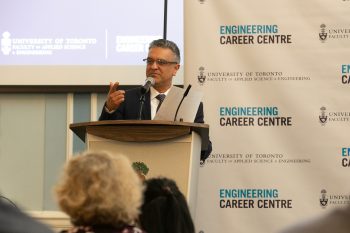A new study on automated external defibrillators finds that optimizing where they are placed may save more lives.
Professor Timothy Chan (MIE) at the University of Toronto used mathematical modelling techniques as he studied the placement of registered AEDs in Toronto and nearby Peel Region.
These were compared to actual locations where cardiac arrests occurred from January 2006 to November 2009.
There were 1,414 out-of-hospital cardiac arrests, and 2,041 AEDs provided coverage within 100 metres for only 16 per cent.
Professor Chan says the average distance to the closest AED was 487 metres, and it would take about five minutes for a bystander to get to it, and then another five minutes to return to the patient.
Using the model, Professor Chan and his colleagues determined that the top five locations for extra AED placement would have covered an additional 51 cardiac arrests.
Brad Holland of the Heart and Stroke Foundation says the research is important in helping to understand how to improve survival for cardiac arrest patients.
The study was presented today at the American Heart Association conference in Chicago.



